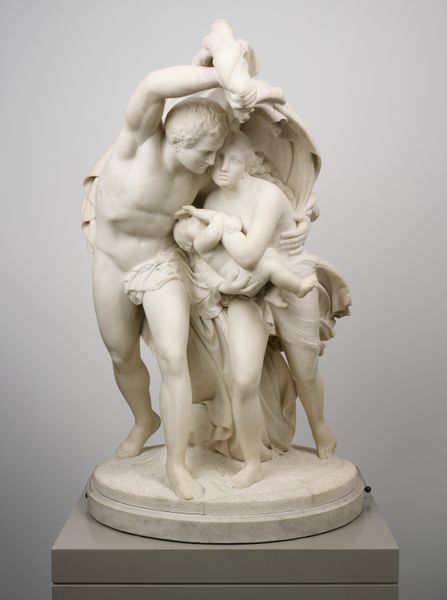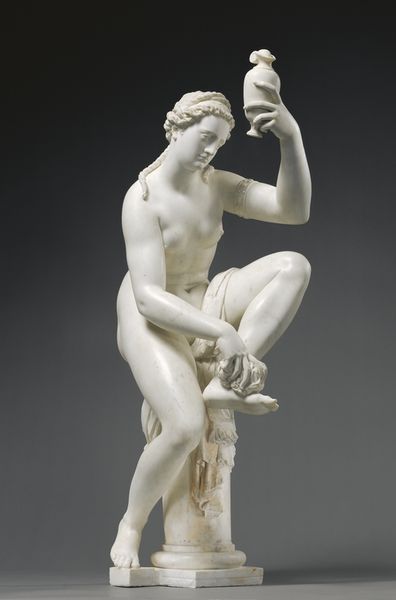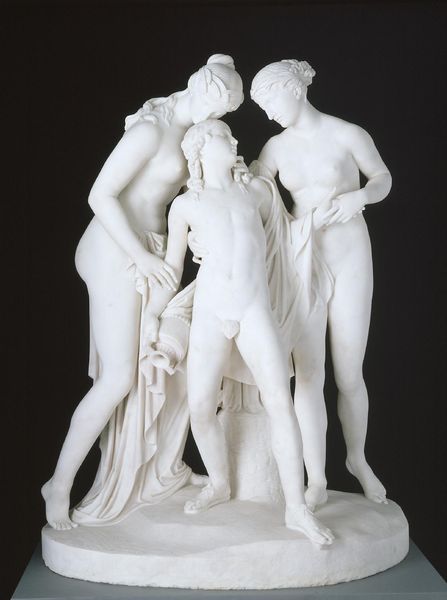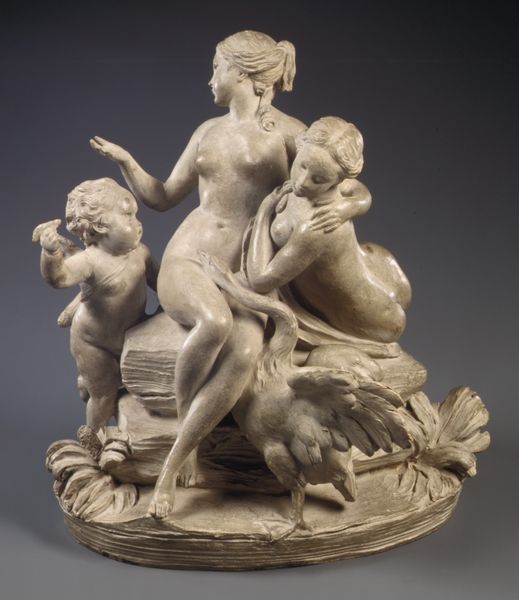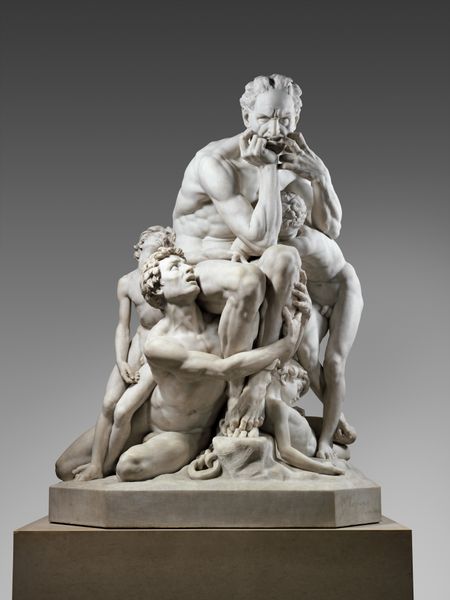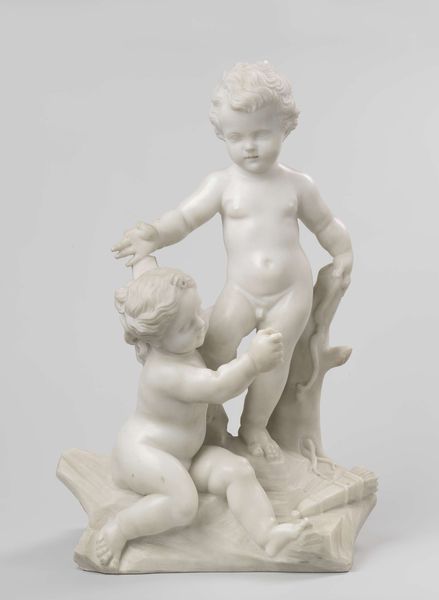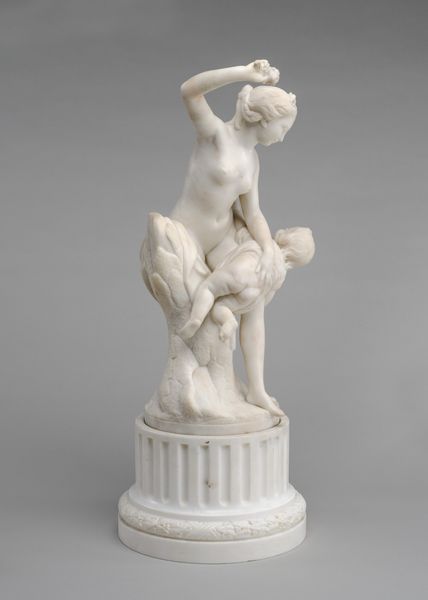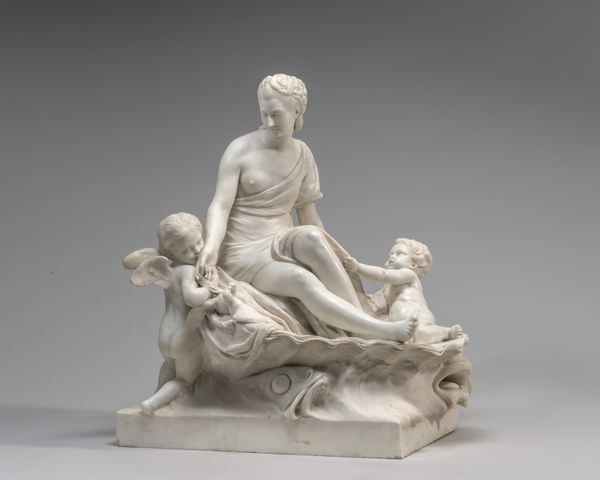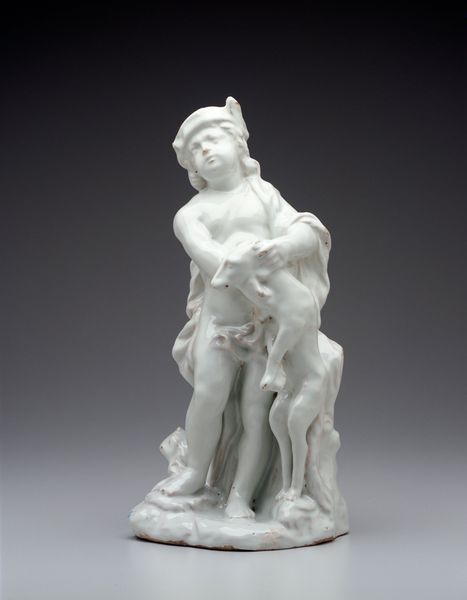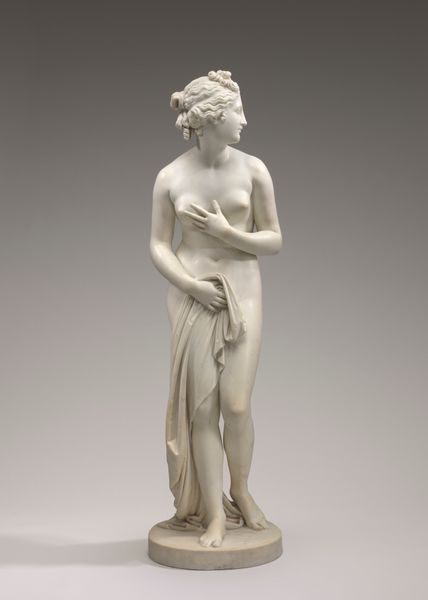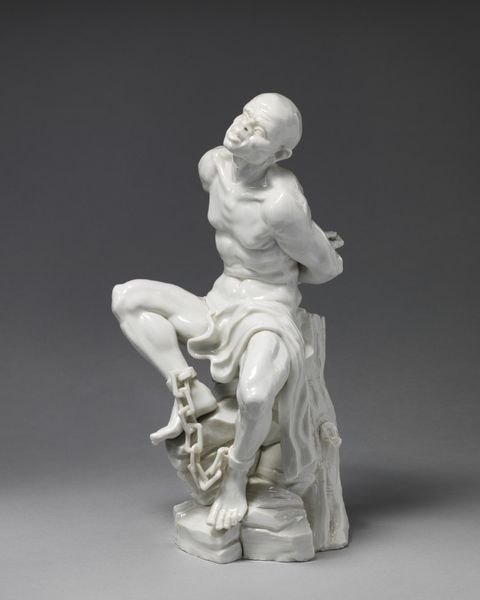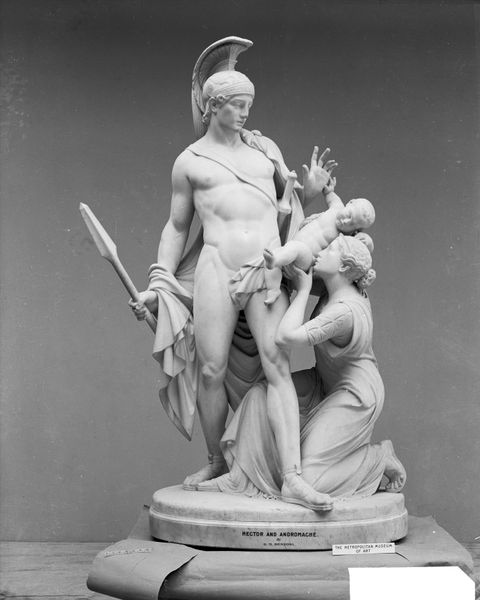
Copyright: Public Domain
Editor: Here we have Louis Simon Boizot's marble sculpture, "L'Amour piqué par une abeille," from around 1775. It depicts Venus and Cupid, but there's something a little unsettling about it to me. How do you interpret this work? Curator: What strikes me is how this piece encapsulates the complex negotiations of power and vulnerability inherent in the rococo era's representation of love. This isn't just a sweet depiction; it's an allegory for the pains associated with desire, seen through a gendered lens. Consider the societal expectations placed on women during that period. What does Venus's reaction to Cupid's sting tell us about the prescribed emotional roles for women? Editor: That's a good point, it makes me rethink Venus’ role in this narrative beyond just motherly concern. Curator: Exactly. The bee sting, in that sense, functions as a metaphor for the societal stings women experience. Think about it, Cupid isn't being punished; Venus seems to be internalizing and managing his pain. Do you see this piece now as reinforcing or critiquing such dynamics? Editor: I’m starting to see how it could be both. On one hand, it reinforces traditional roles by showing a woman primarily concerned with a male figure’s suffering, even when self-inflicted. But maybe it also reveals the absurdity and injustice of those expectations by exaggerating them. Curator: Precisely! And think about the nude figure – Venus here is literally exposed, mirroring the social vulnerability of women at the time. This exposure, combined with her reflexive empathy, creates a potent commentary on female experience. It's more than meets the eye! Editor: I will never be able to see Classicism in the same light again. This was so insightful; thanks for shedding light on those underlying gendered dynamics!
Comments
No comments
Be the first to comment and join the conversation on the ultimate creative platform.
